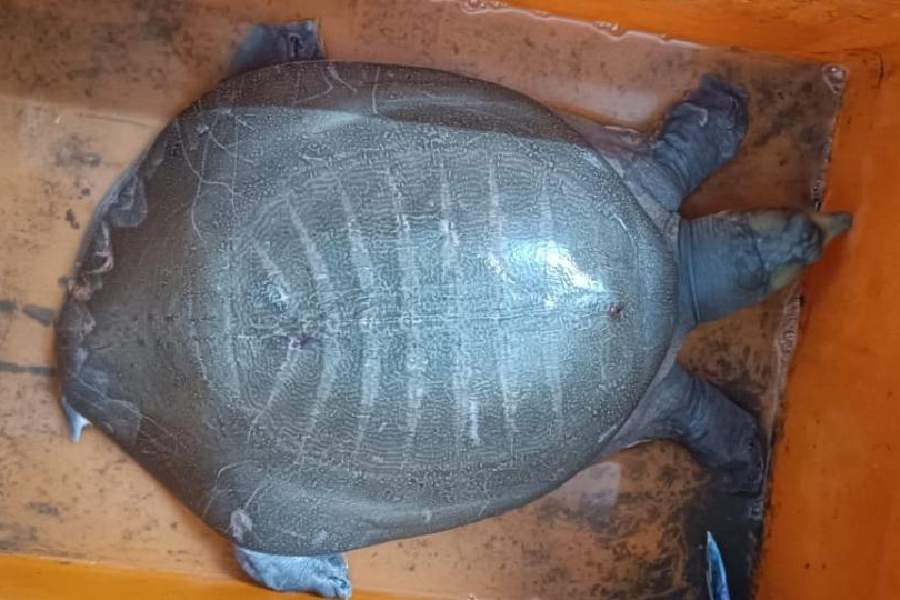Two turtles, each weighing approximately 10kg and 15 inches in diameter, were found on a man in New Town on Thursday, said forest officials.
The man, Shankar Mandal, was arrested by officials of the Wildlife Crime Control Cell, which functions under the state forest department.
The rescued animals were identified as Indian softshell turtles.
Trading in and killing of turtles is banned but turtle meat, considered a delicacy by many, continues to be sold on the sly across the state, especially in North and South 24-Parganas and Howrah.
The species is protected under Schedule I of the Wildlife Protection Act. Killing them can invite a jail term of three to seven years, said a forest official.
“The man was produced in court and sent to jail custody. We are interrogating him. We suspect he was part of a larger racket involved in the trade of turtles,” said a forest officer.
The two turtles are much bigger than the usual ones that are rescued, forest officials said.
But Upamanyu Chak-raborty, a biologist who has been studying freshwater turtles, said softshell turtles are known to grow even bigger.
The turtle trade sees a spike in winter, said forest officials.
“The soft shell turtles are regularly sourced from Uttar Pradesh and neighbouring areas, where they are randomly caught. Most of the catch is later supplied to our state. Bongaon, Gaighata, Barasat and Habra become the main stocking area from where turtles are supplied to markets in the local and markets in neighbouring districts,” said another forester.
It was not immediately clear if the two turtles were sourced from outside Bengal.
A tip-off led the forest officers to Thursday’s raid. They posed as buyers and caught Mandal red-handed, said sources.
This newspaper had filed multiple reports on large consignments of turtles stacked in crates being rescued from trains to Bengal.
“The water bodies and riverbanks get drier in the winter months, making it easier
for people to catch the turtles. Winter also sees a dip in the foraging activities of turtles. They are largely confined to a single place. Once those spots are located, it becomes easier to catch the turtles,” said Chakraborty, the biologist.
